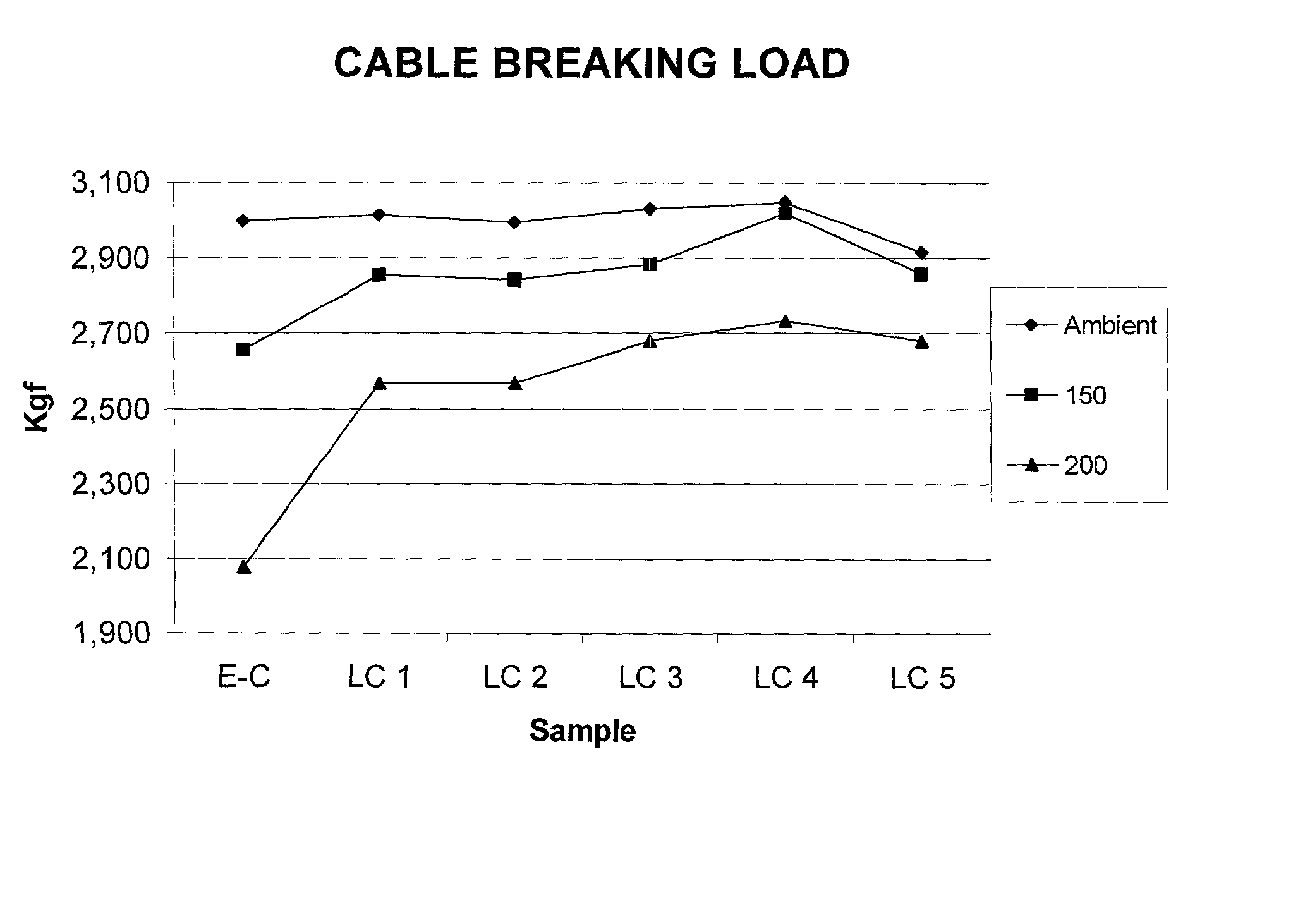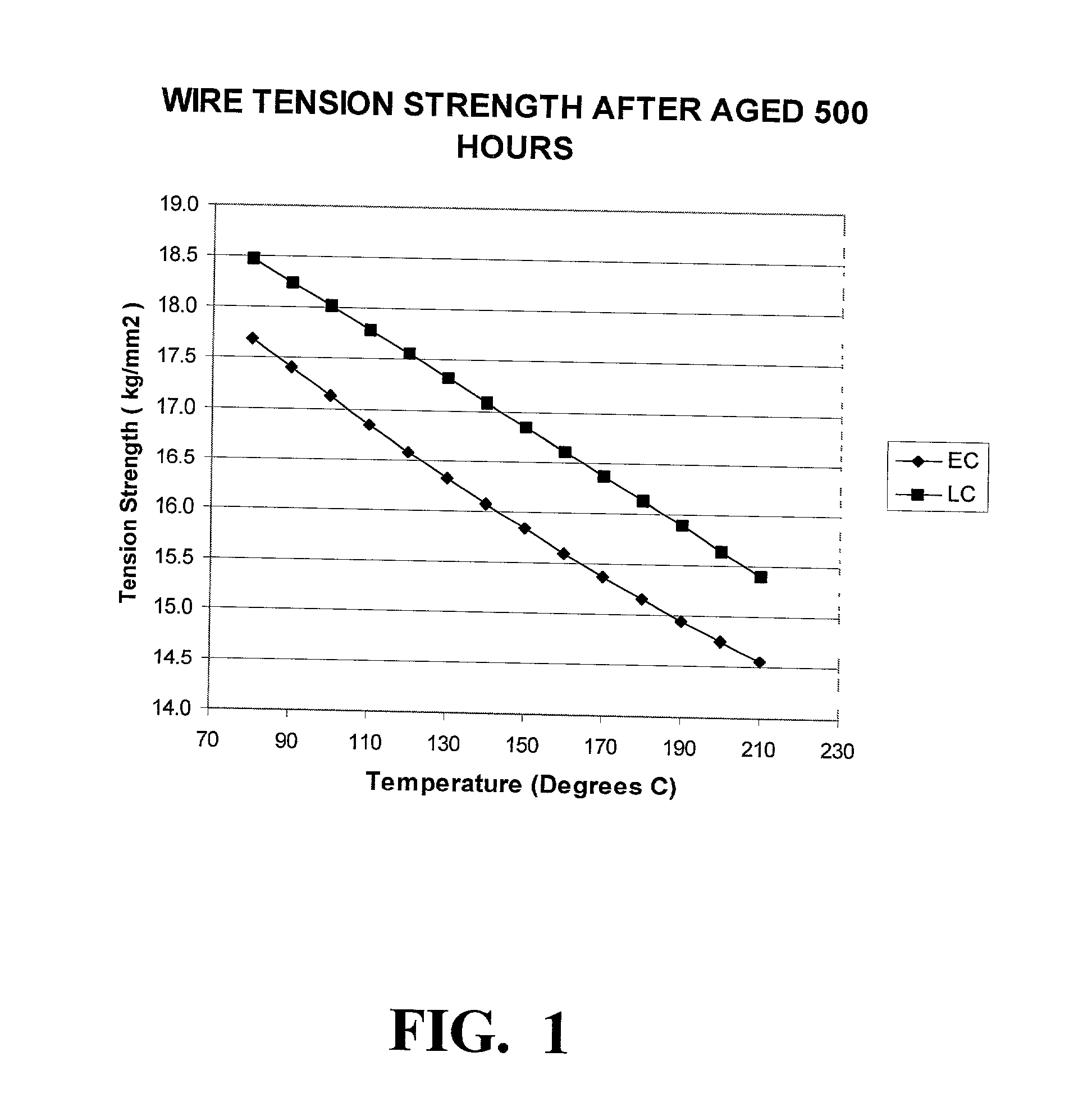Creep resistant cable wire
a cable wire and cable technology, applied in the direction of conductive materials, metal/alloy conductors, conductors, etc., can solve the problems of permanent plastic deformation, and affecting the tensile strength of alloys
- Summary
- Abstract
- Description
- Claims
- Application Information
AI Technical Summary
Benefits of technology
Problems solved by technology
Method used
Image
Examples
example lc alloy 4
[0043] To further increase the resistance to the effects of stress relieving / annealing at temperatures around 200 degrees C., the LC alloy 4 includes an increase of zirconium to above 0.06 weight percent. In addition, "misch metal" was added to maintain acceptable rod conductivity. Furthermore, the cerium in the misch metal assists in maintaining the zirconium in a phase which, thus, minimizes the detrimental effect it has on conductivity. About 0.025 weight percent cerium was added to the melt. Specifically, for this example, 6,189 kg of 97.5 percent pure molten aluminum metal was used, with 7.5 ingots (54.5 kg) of 6 percent zirconium master alloy added to the molten metal through a metal charging spout. In addition, 3.2 kg of misch metal was added. Tables 9 and 10 below show the chemical composition of these samples. The LC alloy 4 contained an average of about 0.0662 weight percent zirconium, with 0.0460 weight percent silicon, and 0.0888 weight percent iron in melt form, and abo...
example
[0046] LC Alloy 5
[0047] The LC alloy 5 followed similar process parameters of that of LC alloy 4. Control of the chemical analysis was maintained within commercial standards for aluminum rod production of electrical conductors. For this example, 6,696 kg of 97.5 percent pure molten aluminum metal was used, with 3.33 ingots (48.5 kg) of 6 percent zirconium master alloy added to the molten metal through a metal charging spout. In similar fashion to the LC alloy 4, 3.31 kg of misch metal was added to the molten alloy of LC alloy 5. Tables 11 and 12 below show the chemical composition of samples A through D and rods from coils 1 through 10. The LC alloy 5 contained an average of about 0.0592 weight percent zirconium, with 0.0453 weight percent silicon, and 0.0750 weight percent iron in melt form, and about 0.0592 weight percent zirconium, with 0.0453 weight percent silicon, and 0.0750 weight percent iron in rod form.
12TABLE 11 CHEMICAL COMPOSITION (MATTER ALLOY) Weight Percent Sam-ple S...
PUM
| Property | Measurement | Unit |
|---|---|---|
| weight percent | aaaaa | aaaaa |
| weight percent | aaaaa | aaaaa |
| weight percent | aaaaa | aaaaa |
Abstract
Description
Claims
Application Information
 Login to View More
Login to View More - R&D
- Intellectual Property
- Life Sciences
- Materials
- Tech Scout
- Unparalleled Data Quality
- Higher Quality Content
- 60% Fewer Hallucinations
Browse by: Latest US Patents, China's latest patents, Technical Efficacy Thesaurus, Application Domain, Technology Topic, Popular Technical Reports.
© 2025 PatSnap. All rights reserved.Legal|Privacy policy|Modern Slavery Act Transparency Statement|Sitemap|About US| Contact US: help@patsnap.com



